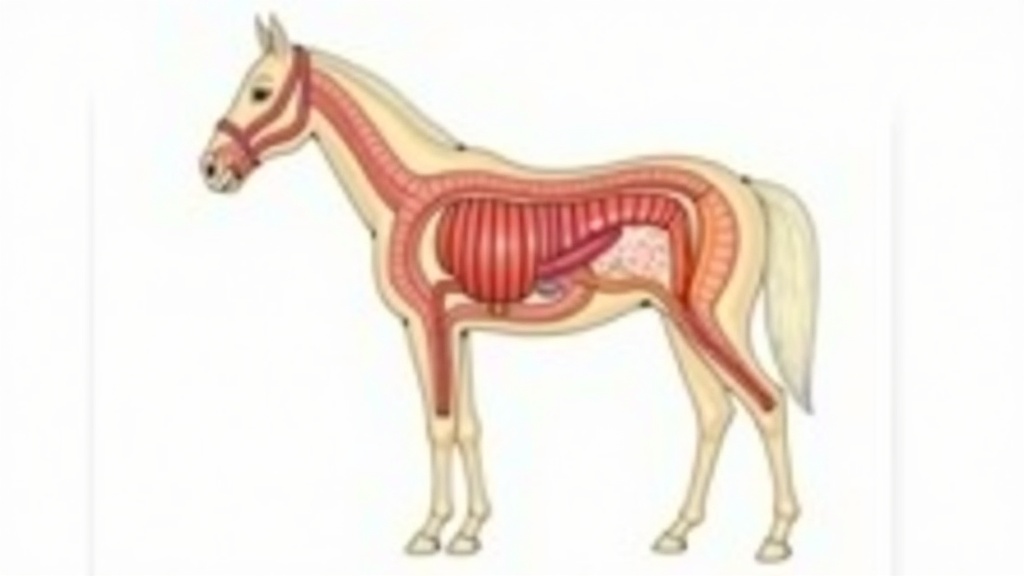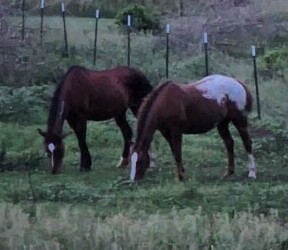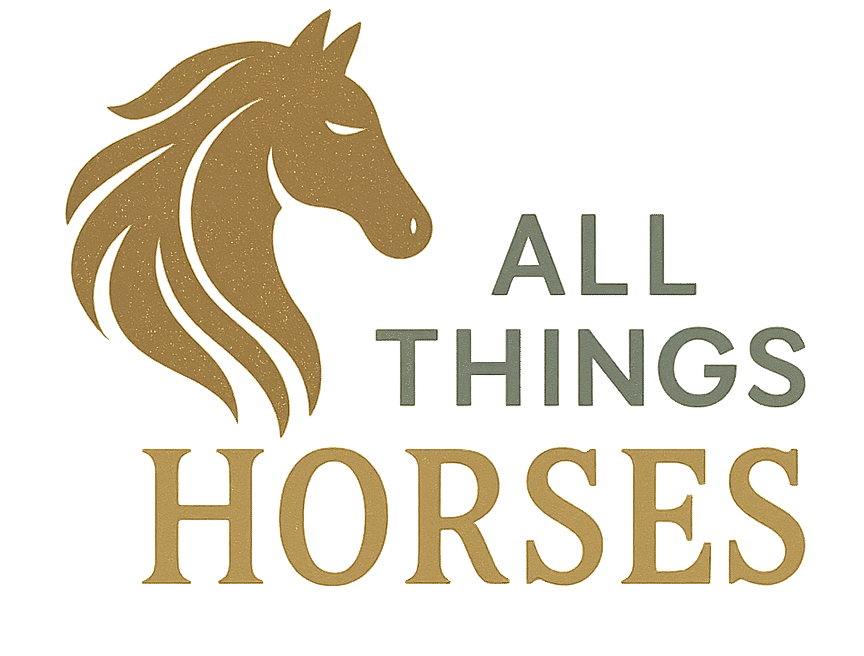Understanding how a horse’s digestive system works can make a huge difference in how you care for them. Everything from feeding choices to health concerns ties right back to what happens from the moment hay or grain hits their lips. Horses have a unique digestive tract that evolved for constant grazing, so their systems are quite a bit different from ours. I’ve spent years caring for horses and reading up on equine digestion, so I’ll break it down with practical tips and realistic advice that comes from experience, not just textbooks.

The Basics of a Horse’s Digestive System
The horse’s digestive system is one long and complicated adventure, running from the mouth to the tail. It’s divided into two big sections: the foregut (which includes the mouth, esophagus, stomach, and small intestine) and the hindgut (the cecum, large colon, small colon, and rectum). Horses have a relatively small stomach compared to their overall size, and most of their digestion takes place in the hindgut, thanks to the work of microbes that break down fiber. This setup is why they do best eating frequent, small meals, basically how they’d naturally graze out in a pasture all day long.
Grass, hay, and other roughage make up the bulk of a healthy horse’s diet. Their stomachs aren’t built for large, infrequent meals like a dog or a human. When too much grain or starch is dumped in at once, that’s when digestive issues show up, such as colic, ulcers, or even laminitis. By understanding each part of the digestive tract, you can see how food choices impact not just nutrition but also gut health and behavior.
Mouth, Teeth, and Esophagus: Where Digestion Kicks Off
Everything starts at the mouth. Horses pick and chew their food thoroughly, at least, if their teeth are in good shape. Sharp points, uneven wear, or missing teeth can mess up chewing and make it tough for a horse to break down hay or grain. That’s why dental care is pretty important. Saliva gets produced as they chew, which helps coat and soften the food, making it easier to swallow and preventing stomach acid from causing problems.
Once a horse swallows, the food slides down the esophagus and into the stomach. Because horses can’t vomit (the esophagus acts like a one-way valve), blockages here, called choke, can be serious and require a quick response. Plenty of water and slow feeding are both super important here. Quick gulping of dry feed is a recipe for trouble, so letting horses eat at a relaxed pace really smooths the way for healthy digestion.
Stomach and Small Intestine: Early Digestion Work
A horse’s stomach is about the size of a rugby ball, so it fills up fast. Digestion gets rolling with acid and enzymes, breaking down proteins, a little bit of fat, and some simple carbs. The stomach empties regularly, which is why horses need consistent access to some form of fibrous feed. Going too long with an empty stomach ramps up the risk of ulcers, and I’ve found that horses on pasture or slow feeders stay happier, calmer, and healthier as a result.
Next up is the small intestine, where most nutrients—think amino acids, sugars, vitamins, and minerals—get absorbed. Any high energy feeds, like grains or pellets, are digested here. If they move through too quickly, more undigested starch ends up in the hindgut. That can disrupt the delicate balance of gut bacteria and may trigger serious issues, so feeding large meals isn’t just unhelpful, it can really backfire. Feeding protocols that keep meals small and spread throughout the day lead to better absorption and fewer digestive troubles over time.
The Hindgut: Where the Magic of Fiber Happens
The hindgut is the real powerhouse for horses, especially when breaking down fiber from hay and grass. Microbes in the cecum and colon get to work fermenting fiber, turning it into volatile fatty acids that power just about everything a horse does. A balanced microbial population in the hindgut also helps keep a horse’s immune system healthy, which is something I always keep in mind when managing stress or changing diets.
Because fiber takes longer to digest, it’s important not to overwhelm the system with rapid feed changes. Any sudden swap in hay or grain (even just a change in hay supplier or pasture field) should be slow, typically over 7 to 10 days, to keep those microbes happy. If a horse’s manure changes in consistency, amount, or smell, it’s often a sign the hindgut isn’t loving what’s happening. Paying attention to these shifts, no matter how small, can prevent bigger problems down the road.
Common Issues In Horse Digestion (And Smart Prevention)
- Colic: Colic simply means abdominal pain, but it can come from gas, impactions, or twists in the gut. Consistent feeding, lots of water, exercise, and slow diet changes help lower the risk. I always watch for signs like rolling, pawing, or sudden changes in eating habits and call the vet if something seems off.
- Ulcers: Stress, infrequent feeding, or too much grain all up the risk for ulcers, mostly in the stomach. For horses in heavy work or showing nervousness or girthiness, often I’ll work with a vet to check for ulcers and adjust feeding plans. Prevention by keeping forage available and limiting grain is key.
- Choke: This is a blockage in the esophagus, often from dry or poorly chewed feed. It sounds scary (and it is), so soaking feed for seniors or horses with dental problems is a smart measure. Slow-feeder hay nets can also help prevent fast eating.
- Laminitis: Overloading on starch or sudden sugar rushes from spring grass can trigger this painful hoof condition. It’s super important to control grain, introduce pasture gradually, and maintain steady forage intake to avoid putting unnecessary stress on the gut and hooves.
Signs of Digestive Problems
I watch for dull coats, weight loss, slow eating, fussiness about feed, excess gas, or changes in manure. Sometimes you’ll spot more subtle clues, like cribbing or wood chewing, that point to a horse needing more chew time or a change in feeding routine. Early noticing and taking action can save a horse a lot of discomfort and keep things running smoothly.
Feeding Tips for Supporting the Digestive System
- Keep Forage First: Grass or hay should be the biggest part of any horse’s diet. Aim for 1.5 to 2 percent of their body weight in forage daily, split into small, regular meals. If the pasture is short or unavailable, use good quality hay and always provide it free choice if you can.
- Limit Grain and Rich Treats: Use concentrated feeds only when necessary and always introduce them gradually. Too much or too fast is a shortcut to an unhappy gut. Treats like apples or carrots can be healthy in moderation, but keep portions small and consistent to avoid upset.
- Offer Fresh, Clean Water at All Times: Dehydration slows gut movement and ups the risk for colic. In colder months, slightly warming the water can encourage drinking and support steady digestion year round.
- Routine Dental Checks: Horses with sharp points or missing teeth will struggle to chew, so keeping up with dental care is really important. Schedule dental exams at least once a year, more often for seniors or horses with known issues. Good chewing means better saliva and better digestion from the very start.
- Move Slowly with Diet Changes: Any adjustments, whether switching from hay to pasture, changing brands, or upping grain, should be gradual. A week to ten days is best to avoid shocking the microbial populations in the hindgut.
- Monitor Manure: Regular, formed, moist droppings are usually a sign things are working well. Any sudden shift toward dry, loose, or strange smelling manure should be taken seriously and checked out promptly.
Good feeding routines, smart diet management, and attention to the small details can go a long way toward keeping a horse’s digestive system humming along happily. A happy gut leads to a happy horse, and that’s always the goal for anyone working with these animals.
Horse Digestive System PDF and Useful Resources
For a more super detailed breakdown, diagrams, and checklists, plenty of reputable sources provide printable guides and infographics. A favorite I use for new horse owners is this well-illustrated digestive tract PDF from University of Minnesota Extension (just search “horse digestive system PDF” on their site if the link changes). These are handy for barn reference and giving to new staff or friends just starting out. Educational posters and handouts can also help simplify complex info, making it easier to remember when the pressure is on during feeding or emergencies.
Horse Digestive System Diagram
Visual learners can get a lot out of clear diagrams. These usually highlight the mouth, esophagus, stomach, small intestine, cecum, large colon, small colon, and rectum, sometimes overlaying where common issues occur. Check out resources like the The Horse magazine for high quality, labeled images. Keeping a printed diagram in the tack room is something I always recommend for quick reference during feeding time troubleshooting. Diagrams also help make sense of conversations with your vet and clarify step by step what’s happening inside the horse’s belly when problems arise.
Horse Parts and Functions
Each main part of the horse’s digestive system has a specific role:
- Mouth: Chews and moistens food, starting the digestion process with saliva.
- Teeth: Grind food to create small particles, making digestion easier and more thorough.
- Esophagus: Transports food from mouth to stomach in one direction only. Blockages can be serious since food can’t move back up.
- Stomach: Small, acidic chamber, begins breaking down protein and softening fiber. Regular filling helps protect against ulcers.
- Small Intestine: Absorbs sugars, amino acids, vitamins, and minerals for body repair and energy.
- Cecum & Large Colon: Houses bacteria for fermenting fiber and producing energy, also key for vitamin creation and water absorption.
- Small Colon & Rectum: Absorbs remaining water and forms, then expels, manure in neat balls. Healthy output here is a key sign of gut wellbeing.
When one part isn’t working smoothly, the whole system gets thrown off, so a good understanding of each step pays off in fewer vet bills and a happier horse. Keeping digestive health in mind also helps prevent subtle problems from becoming serious surprises later on.
Frequently Asked Questions
New horse owners and barn crew often have the same questions about digestion and feeding.
How long does it take for food to pass through a horse?
Food usually moves from the mouth to manure in about 24 to 48 hours. The stomach empties in as little as 20 minutes, but the hindgut can hold onto fiber for hours while breaking it down for slow, steady energy.
Why shouldn’t I feed one big meal a day?
Big meals don’t match how a horse’s digestive system works. They’re designed to eat little and often. Large meals can cause tummy upsets and even colic since the stomach empties quickly and high starch loads can overwhelm the hindgut.
Can horses vomit if they have indigestion?
No. The horse’s esophagus prevents vomiting, which is why choking and some types of colic can turn serious fast and need emergency care from your veterinarian.
What should I do if my horse suddenly stops eating or passes unusual manure?
This could be a sign of trouble, whether colic, choke, dental pain, or other digestive upsets. Call your veterinarian to discuss symptoms for the quickest help and never wait too long in urgent situations.
Is a supplement for gut health helpful?
Sometimes, especially for horses under stress or on grain heavy diets. Look for feeds with prebiotics or probiotics, but check with your vet first so you’re not throwing off the diet balance. Some horses benefit, while others just need quality forage, water, and routine to do well.
The Takeaway on Horse Digestion
Keeping a horse healthy starts with understanding their unique digestive system and working with, not against, their natural grazing instincts. Consistent routines, plenty of good forage, and regular checkups all add up to fewer gut upsets and a much happier horse in your care. Paying attention to even minor changes and acting quickly keeps digestive health on track, and your horse feeling their very best every day.
